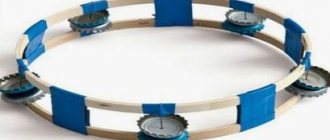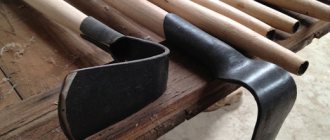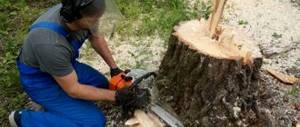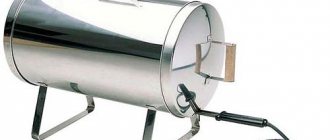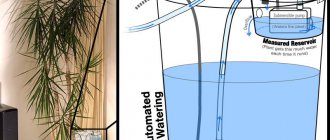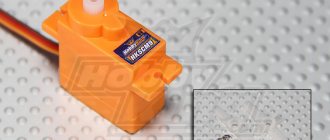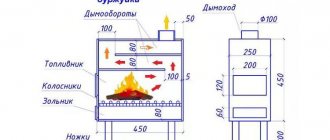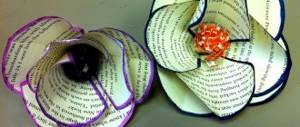The Vietnamese mastered a completely non-standard method of fishing for us. Of course, these Asians can fish with nets, hooks and fishing rods, however, in this particular case they fish with plastic bottles. A simple design device and fishing method await you further.
Driving across the bridge you won’t notice it right away. on what kind of revival the level is lower.
They catch fish. It's a common thing in India, too, from bridges they catch fish with a fishing line tied to their finger. At first I thought they were using the same design here.
I approached the guys at the bridge and discovered that they were catching fish in a completely non-standard way, in my understanding. At the end of the fishing line is a cut soda bottle, with the bottom cut off.
There is a sinker at the bottom of the cork, and they pour flour into the bottle itself and mix thoroughly.
Then they throw it down. Judging by the fact that the guys are wearing helmets, they came to quickly catch fish without even taking off their helmets.
They cast the line, the bottle lies sideways on the bottom, wait a few seconds and hook. The catch in the bottle is a palm-length fish.
The catch of one of the bottle fishermen.
Making a muzzle or, as it is otherwise called, a fish trap is not as difficult as it might seem. In addition, this can be done absolutely from improvised means and almost absolutely free. And you can even make it from one and a half rubles, that is, a plastic bottle. You need to remove the thread from the one and a half shirt and weave a net from it - here you have an almost ready-made muzzle for fishing. All that remains is to come up with a frame for the muzzle and tie and strengthen the whole thing, as well as make an entrance for the fish, as is done on all muzzles, in the form of a tapering hole. Here we will not delve into the creation of the muzzle and all the subtleties of its manufacture, but will simply show what it can be made from using improvised means. So, we wind the chopped thread onto this homemade tool for weaving nets. Next, we make a set of loops on some kind of rope tied into a ring. Well, then everything is according to the picture. We take 1 loop and thread the tool into it and pull it to the ruler. Hold the thread tension with the thumb of your left hand. And with our right hand we tighten the whole thing with a knot, prying it with a tool. See picture. And tighten this knot, releasing your thumb at the end of the tightening. This is what the tightening field turned out to be. And a new loop formed on the ruler. Next repeat. New picture, clearer and more understandable. We hook the loop from below with a tool. We make a knot by inserting the tool again from below behind the loop. And we tighten it. A set of loops gradually forms on the ruler. And it needs to be reset. And to start a new knitting, put 1-2 loops on the ruler for the convenience of further knitting. This is roughly what happens. Here is such a mesh, made in haste, not very beautiful, since the one and a half sheet was faceted and the thread was not even. To pull thread from one and a half sheets, that is, cutting, it is advisable to use smooth, not faceted one and a half sheets. Then it will be convenient to weave a network and it will turn out beautiful and cultured. Well, finishing the topic of weaving a muzzle for catching fish, I’ll add a picture of a muzzle from the Internet. I’ll probably be braiding it by summer, since in winter there’s not much fishing for the muzzle. Well, here the entrance is made from two sides, but you can do it from only one. And to create such a muzzle, we weave a bag using the above method and prepare a frame, for example, from metal wire, or, as was done before, from the twigs of a willow or willow, or from something at hand, metal hoops, for example. And then we put the prepared mesh bag on the frame and make one or two entrances as in the picture with a tapering conical entrance. That's all the technology for catching fish with a muzzle and its creation.
delalsam.blogspot.ru
What is a fishing top?
The muzzle, venter, or top is a trap with a funnel-shaped entrance. A fish interested in the bait swims through a gradually narrowing tunnel and gets inside the body, where the bait lies. When trying to leave the container, the fish is no longer able to find the hole through which it entered.
When removing the tackle from the water, the fisherman can get the catch through another hole, which remains closed while the tackle is working. If the homemade top is made from a ready-made container (can, plastic bottle), then it is advisable to provide a funnel attachment that will make it easy to remove it when taking out the catch.
Learning to catch live bait and hook it correctly
This material will talk about live bait fishing for predators, in the aspect that is dedicated directly to live bait. We will tell you how to mount live bait, how to prepare and store it, and what containers to use for transporting it. We will also dwell a little on the manufacture of traps for fry and canals for their transportation. Let’s make a reservation right away that it is wrong when some fishermen call a vessel for live bait the term “eland”; the word “canna” should be used.
When starting a story about live bait fishing, it is impossible not to give a brief description of the live baits themselves. Moreover, it is appropriate here to mention not only the taste preferences of pike, another predator, but also such characteristics as the survival rate and transportability of the fry.
- Crucian carp. To the taste of all predators, especially pike, the vitality is excellent. In suitable conditions, caught in the fall in November, it can survive the entire winter.
- Top melter. An excellent snack for perch and rotan; pike, especially small ones, will not disdain it. In terms of vitality, it is almost as good as crucian carp. Not suitable for river fishing due to fatigue. In spring it is in greatest demand, as the water warms up slowly and the predator rises to the warm upper layers, where the apex swimmer lives.
- Roach, rudd. Like other river fish, it does not live long in captivity. To increase shelf life and during transportation, it is worth using compact, autonomous battery-powered compressors.
- Perch. It practically does not survive in summer and autumn. It can be stored well only in winter in almost ice-cold water, but even then no more than two weeks. Pike and zander like striped sailors.
- Loach. An excellent live bait, one of the few used for trolling and live fishing. Vitality is not inferior to crucian carp. Pike, and other predators, grab the loach greedily, because of its fidgetiness on the hook. You can catch loach by equipping a donk with it.
- Gudgeon. Live bait, which is to the taste of any predator, but has no survivability. Excellent for catching pike while fishing in the current. You can also catch minnows from a boat.
- Rotan. The Far Eastern guest likes perch and pike. In summer it lives poorly, in winter it comes to life even after freezing and subsequent thawing.
- Ruff. Burbot's favorite delicacy. Even pike perch will not disdain them. The ruff has been used since November. During the period with warmer water, he quickly falls asleep.
- Bleak. This fish can be caught in spring, summer, and autumn using a float rod and a line from the shore or boat. For this pelagic fish, pike and perch rise from the bottom with great eagerness.
How to do it yourself?
Traditionally, willow or other thin and flexible branches were used to make the top. To weave a funnel, a ring with a diameter of 5-7 cm was made, on which a vine for the base was secured. The base was braided with thinner strands, and it was given the shape of a funnel, expanding from the ring. Having made an entrance about 20-25 cm long, they began to weave the expanded upper part of the muzzle, spreading the warp rods to the sides and gradually bending them down.
The entrance funnel then ends up inside the wicker vessel, which again begins to narrow towards the top. In a simple method, the ends of the unbraided rods can be tied with a strip of strong bark or rope, closing the hole. In a more complex version, a ring of larger diameter was placed on this hole, and a lid made from a circle of thick bark or woven from a vine was attached to it. Similar designs are still woven in villages using wire.
From a plastic bottle
At a picnic by a pond, the muzzle can be easily made from scrap material using a water or beer container. The amount of fish that can be caught in 1 cast and the size of the crucian carp depend on its volume.
Cut off the neck of the bottle and part of the body at about 1/3 of its height. If necessary, you can also remove the screw part under the cover to slightly enlarge the hole. In 5-liter cylinders this can no longer be done.
Turn the cut part of the container over and place the neck inside the container. Connect the edges of the parts with wire. The fastening must be detachable so that the neck can be removed and the fish can be taken out of the trap.
From the air filter
You will need a large filter from a truck (most often they take an air filter from KAMAZ). Remove all filling from the mesh body. A cylindrical metal grid is well suited for quickly making a top with your own hands:
- cut out and fasten at one end a dense, blind cover made of tin or plastic, plywood, etc.;
- make a funnel for entering the trap from flexible sheet material;
- strengthen the funnel with the narrow end inside the mesh body;
- tie a rope.
With metal frame
Frame products will require the use of thick steel wire and material to cover the frame. Most often, nylon or plastic mesh with a fine mesh is used as covering. You can make a top on a frame with 1 or 2 funnel-shaped entrances:
- Roll several rings of equal size from steel wire. Their diameter is chosen arbitrarily, but to catch large fish it is better to make the muzzle at least 30 cm wide. The length of the product depends on the number of rings; you can make 3-5 frame rings.
- Make 1-2 small rings for the entrances from the same wire. Their diameter can vary between 5-10 cm, depending on the size of the desired prey.
- Wrap the net around a large ring, leaving a free edge of about 20 cm in length. Tie the net to the ring with a slight overlap at the junction of the side edges. After 20-30 cm, also tie another 1-3 rings, and secure the last one at a distance of 20 cm from the edge of the mesh. You should get a soft cylinder with a loose mesh on the end sides.
- Shape the edges of the net into a cone shape, laying several folds, and attach small rings to the edges.
- Bend the tapered ends inside the body. To prevent the fish from swimming through the trap in a straight line, the entrances are shifted to the opposite sides of the venter, secured with leashes made of wire or fishing line.
If they make a top with 1 entrance, then the other end can be tied tightly so that the fish does not escape through it. The same principle applies to collecting crayfish, but making one side flat so that it fits better on the ground. The frame wire can be replaced with a plastic tube rolled into circles of the desired diameter.
Made from metal mesh
Another way to make a fishing top is to use a rigid galvanized mesh. From it you need to cut a rectangle, the width of which will be equal to the length of the future product. The length of the workpiece is selected so that it can be rolled into a cylinder with a diameter of about 30 cm.
Roll up the body of the top and connect the side seam using wire. Cut out a funnel from the same mesh, roll it up and secure it to the end of the mesh cylinder. The other end of the body is equipped with a lid that can be opened to remove the catch. Attach the rope.
Characteristics of the main types
Homemade fish traps can be of several types. They are:
- Stationary
. These are hydraulic structures that are attached to the bottom and remain under water for a long period. The simplest version of a stationary trap is stakes with a net stretched between them. - Mobile
. Portable fishing lures can be divided into tunnel and screen lures.
Tunnel varieties can be made of metal mesh or woven rods. The essence of such a trap is that when a fish gets into it, it simply gets lost in the tunnel, so it cannot get out of it. The structure must be made so that the fish can easily swim into it, but not swim back out.
Screen traps are also called “spiders”. They are distinguished by their flat shape. Most often it is a net stretched between four rods, and a bait with a sinker is attached in the center.
The bait is also placed on top, so as soon as the fish gather near the bait, the net can be immediately raised.
Top fishing methods
Fishing for top fish can be done with or without bait. Fish can be attracted by the smell of food or the structure itself (during the spawning period). But for successful fishing you need to know how and when it is better to catch crayfish or crucian carp.
With bait
The feeding instinct forces the fish to dig into the most inconvenient places if it expects to get to the food. Lures that many breeds find attractive are placed in the muzzle: bread or dough flavored with vegetable oil, and sometimes with odorous substances (anise drops, perfume, valerian tincture, etc.). Potato peels, egg shells, and dough are suitable for catching crucian carp. In addition to crucian carp, minnows and minnows are used for such bait.
They are caught with bait in the summer, throwing their muzzles into the shady corners of the reservoir. It is advisable to drown the top where the strip of coastal underwater vegetation begins. If it is possible to observe the reservoir during the morning and evening feeding of the fish, then the fisherman will be able to determine a more accurate location for casting the tackle: the tip is placed where the fish were playing.
Without using bait
Sometimes catching tops is possible even without using bait. The method without bait is used in the spring, when the fish goes to spawn and may find that such a convenient place is suitable for spawning. Different breeds of fish that prefer to spawn in thickets of plants can get into the snout at this time. The trap is placed where a concentration of crucian carp, bream, and ide is found. The spawning site is easy to determine by splashes of water.
What not to fish - prohibited fishing gear
For amateur and sport fishing, the following is prohibited:
- networks of all types;
- traps of all types and designs (merezh, venter, top, snout, pins, etc.), with the exception of crayfish traps;
- passive fishing gear (zakidushki, postavushki, pokes and others) on rivers that are habitats for salmon species;
- pneumatic weapons (except for shotguns and pistols for underwater hunting);
- fishing rods and spinning gear of all systems and names with a total number of hooks (hooks) of more than 10 pieces per citizen;
- trawling fishing gear;
- net straining and catching fishing gear and devices (drags, seines, dragnets, bastings, lifting nets, circles, televisions, screens, grips, drills, shards, capes, kerchiefs, saks, kotsov, lionfish, Germans, beryloks, rezhaks, ohans and others);
- lifters (spiders) and scoops measuring more than 100×100 cm, and with a mesh size (pitch) of more than 10 mm;
- piercing fishing gear (spears and others), with the exception of rifles and pistols for underwater hunting;
- catfish;
- traps;
- hook fishing gear;
- How not to fish - prohibited fishing methods
b) carry out extraction (catch) of aquatic biological resources:
- method of purging (by hooking);
- jamming method;
- nets with a total number of hooks of more than 10 pieces on fishing gear for one citizen;
- for lighting;
- on the track (trolling) using a sail and a motor using more than two baits;
- circles and girders with a total number of hooks of more than 10 pieces on fishing gear for one citizen;
- by installing driveways, fences, pins, dams and other types of barriers that partially or completely block the bed of reservoirs and watercourses and impede the free movement of fish;
- more than three crayfish traps per citizen, with a diameter of each crayfish trap of more than 80 cm and a mesh size (pitch) of less than 22 mm;
- closing method;
- gill method (using bagasse traps, harvesters);
- wade crayfish by hand or by diving;
c) draining reservoirs for the purpose of catching aquatic biological resources;
d) installation of huts and other stationary structures on the ice of water bodies of fishing significance, with the exception of portable windproof devices.
Fishermen, never use prohibited fishing methods or fishing gear. Preserve nature and aquatic biodiversity for your descendants.
Top-muzzle made of plastic mesh for fishing
Dear site visitors, in this material you will be presented with the process of making a top-muzzle from a plastic mesh with a 10 mm mesh for fishing in reservoirs.
The top-muzzle is an ancient ancestral method of fishing, proven for centuries. Previously, our ancestors wove tops from willow or walnut twigs, which resulted in a kind of tube-shaped basket tapering towards the end. The top has a main compartment and a neck through which the fish actually swims; the diameter of the neck is usually such that you can stick your hand in and get the catch.
Today there are many different materials that are durable and reliable, for example, plastic mesh for fences and fences, it is quite suitable for making tops.
First, a frame is made of steel and aluminum wire, and then simply covered with plastic mesh. Let's look at what exactly is needed?
1. steel and aluminum wire 2. 10 mm plastic mesh 3. nylon rope
Step-by-step instructions for making a do-it-yourself muzzle top for catching fish.
Everything is quite simple) the author bought a 1.5 m plastic mesh, it cost 100 rubles.
Then a frame is made from steel and aluminum wire, 3 rings connected by crossbars.
Next is the neck of the top, here a small ring is bent so that the hand fits into it.
The frame is covered with plastic mesh and secured with thin aluminum wire.
The neck is tightened according to the same principle.
This is actually how the top-face turned out)
The author also filmed the entire process from the beginning of creating the muzzle to its installation and the caught catch. We recommend you watch it, it's quite interesting.
As you can see, there is nothing complicated, even a child can do it and catch fish) So let’s take it and do it. Be brave, friends!
Did you like the article? Subscribe to the channel to stay up to date with the most interesting materials
Baby net
Malyavochnitsa is the simplest trap design. This is a frame made of metal wire with a diameter of up to two millimeters with a stretched fine mesh. The structure is tied with a cord to a massive stick. Operating such a trap will not be difficult. To do this, bait (bread, porridge) is placed at the bottom of the trap, and the structure smoothly sinks to the bottom in the places where the fry live. When there is a sufficient accumulation of small fish above the trap, the structure is raised. The caught fry is transferred to a bait storage container and the process is repeated.
Do-it-yourself painter
And another trap for the fry
How fishermen of the Far North salt fish
The northern regions are a traditional fishing region. Northern peoples know how to cook fish dishes superbly. They know thousands of recipes and hundreds of nuances.
Fish dishes prepared by northern fishermen are always incredibly tasty, moderately salted and with a well-chosen set of seasonings and spices.
A Yakut fisherman shared a recipe for salting fish, which I would like to talk about in this publication.
Northern fish is incredibly tasty. Grayling
After the recipe was tested by one of our authors, we decided to publish it on the resource pages.
Let's say right away that the fish turned out very tasty. And the recipe itself is simple to the point of banality.
Equipment and bait
Now let's consider the question of how to attach live bait correctly, what gear and methods to use. There are three types of bait hooks:
The choice of one hook or another is determined primarily by the type of fry and the method of hooking it, and the choice of gear. Single hooks are designed for hooking even the smallest fish. The weight of live bait, bleak or top-fin, is small, so these fry are placed mainly through the nostril, and predators swallow them quite deeply, so the use of doubles or tees is not justified here. It should be added that bleak is a very delicate live bait, rough handling is unacceptable and leads to the death of the fish.
Doubles are used when baiting live bait through the gills. In this equipment, the main role is played by the openness of this type of hooks. With this method of equipment, you should do the following:
- remove the double from the leash;
- pass the loop of the leash through the mouth of the baitfish and bring it out through the gills;
- insert a double into the loop of the leash so that its stings fit the fry’s head from below.
When baited with live bait through the gills, you can fish with confidence; this mounting method is the least likely to injure the fish.
Tees are used in rigs for large live baits when they are placed in the middle of the back. It is good to use them when using spiny fry - perch or ruff. Their natural prickliness masks the sharp stings of the treble hooks and allows you to catch pike without fear that it will spit out the bait.
There is a nuance in planting a loach. It's not that easy to do this correctly. The loach is slippery, fidgety, and quite difficult to hold. You should hold the loach behind your head with your fingers, like a snake, and quickly pierce it with a tee hook in the middle of the back. At the same time, the famous loach squeak is heard.
Yakut way of salting fish
This method is most suitable for freshly caught fish that have just been caught from a pond.
According to this recipe, you can salt both native northern fish - smelt, vendace, grayling, pink salmon, chum salmon, and the most common ones - roach, cape, sabrefish, crucian carp, perch, pike.
- Large fish must be gutted before salting, small fish must be washed thoroughly. We strongly recommend removing the gills, as all the dirt accumulates in them.
- The fish is ready for salting. Now you should prepare the pickling mixture.
- The pickling mixture consists of a glass of coarse table salt, a tablespoon of sugar and red hot pepper. If you like it spicier, then add two teaspoons of pepper; if you don’t like it, then one or even half a teaspoon will be enough.
- All three components should be thoroughly mixed together.
- All that remains is to salt the fish. A layer of pickling mixture should be poured onto the bottom of the pickling container, then a layer of fish, then the mixture. And so on. The last layer is the pickling mixture.
- If desired, you can crumble a couple of bay leaves and crush a few black peppercorns.
- Cover with an inverted lid or flat plate and apply light pressure.
- Leave the container with fish at room temperature for a day, then put it in a cool place - a cellar, barn or refrigerator.
Salted nelma. Another northern delicacy
Fish is salted for about three to four days.
Then rinse the fish from excess salt and hang it in a draft to dry. After a couple of days, you can enjoy delicious fish salted according to the Yakut method.
Did you like the article? Subscribe to the channel to stay up to date with the most interesting materials
Transportation
Delivery of live bait for fishing is also associated with a number of difficulties. If a pond with a predator is within walking distance, then live bait can be brought in an ordinary bucket. If live bait for fishing is caught in the same body of water where the predator is to be hunted, then it can be stored in a fine-mesh cage lowered into the water. This method is especially suitable for fishing from a boat.
A bucket is not suitable for delivery by car; you need a special container - a can for live bait. It must ensure the safety of live bait: protect the water from splashing and, if possible, maintain the optimal water temperature for the time of year.
Although live bait cans can be bought at any self-respecting fishing store, many fishermen try to make them at home with their own hands. They are made from plastic cans or foam, old pots or cans, and other suitable materials. Winter containers are additionally insulated with foam rubber, foil insulation or polystyrene foam.
In spring and summer, the live bait can is additionally equipped with a compressor, which runs from a car cigarette lighter or from a battery.
If you need to transport or store a large amount of live bait in a pond, plastic barrels with a volume of 50-60 liters are perfect. To transport live bait, the barrel must be equipped with one or even two aerators.
At the fishing site, we replace the lid of the barrel with a net or gauze, which can be secured with an elastic band or rope, and place a weight on the bottom of the barrel. Gauze or mesh is needed to renew the water and keep the bait longer. We tie a rope to the barrel so that it is convenient to lift it later and immerse it in the water. In winter, through a specially made ice hole. In summer, it is better to immerse the barrel under water in a shady place, and attach the rope to a driven stake.
Fishing muzzle: description of the device, how to make a trap
There is an opinion that fish traps appeared much earlier than gear. Most likely, they were used already in the Stone Age. With the use of these devices, the meaning of fishing as one of the sports and recreation is somewhat lost, but be that as it may, fish traps are in demand.
In an effort to save time and effort, but at the same time ensure a decent catch, many people use various fishing tricks and homemade products on reservoirs. "Muzzle" is one such trap. Of course, this product cannot be called a new product, since it is widely used by professional fishermen and amateurs. Beginners who decide to learn how to make this fish trap with their own hands can glean a lot of useful information from this article.
Is it possible to fish with a merezh, snout, venterem, top, spider or lift?
Prohibited fishing methods: What not to fish with
What you can’t fish with, where you can’t fish and when you can’t fish is written in the Fishing Rules of the Volga-Caspian Fishery Basin. In connection with the opening of the fishing season, we remind anglers that there is a list of prohibited fishing gear and prohibited fishing methods.
For amateur and sport fishing in Russia, not all fishing equipment can be used for fishing. In order not to break the law, read the excerpt from the Fishery Rules of the Volga-Caspian Fishery Basin.
How to make a face? Progress
Making a device at home is not difficult if you follow the following sequence of actions:
- The first step is to make a hoop. It’s good if you managed to find a ready-made wood product. Otherwise, the home craftsman will have to make it himself. For this purpose, hard wire, previously sanded with sandpaper, is suitable. To prevent the product from rusting, a special antiseptic is applied to its surface. After the substance has dried, the hoop is given the required shape and size. Tree roots and branches are also suitable as material. The consumable material will be more elastic if it is first dipped in boiling water. Otherwise, working with wood will be difficult. Next, both ends of the hoop are pulled together and secured with a strong thread.
- Make the body of the muzzle. The rods are collected into a bundle and aligned in length. One tip is separated from the bunch, it needs to be tied to a hoop, and a stick placed under the string. Do the same with the rest of the rods. In order not to confuse the rods intended for making the body with the material for the cone, every second rod should be separated. The hoop is tied around the circle with it. The rods that will be used in the body are attached and fixed with a transverse braid to another hoop.
- To increase the length of the body, new branches are added to its rods and braided to a new hoop.
- After weaving, they begin to make holes in the trap cone. For this purpose, the craftsmen, stepping back a little from the braid, cut off all excess from the rods.
- So that the caught fish can be removed from the trap, a special hole is made in the structure. It is done in those rods that are located between different hoops. The dimensions of the windows may vary. It all depends on the size of the fish caught. They are closed using special doors that are woven separately. They are attached to the structure itself using a rope.
Judging by numerous reviews, the procedure for making a muzzle for catching fish is quite labor-intensive, but simple, and even a novice fisherman can handle it.
Harvesting live bait
Live bait is harvested in several ways depending on its species, place of catch and season. Basic fishing methods:
- On a float rod from the shore. It is not difficult for her to catch crucian carp, roach, gudgeon, rotan and perch. Basically, fishing takes place in the same body of water where the predator hunt is planned. A large number of fry are found only in shallow waters, where fish, such as crucian carp, degenerate. In the current, they use a fishing rod to catch the fry in the line. You can catch fry with a fishing rod throughout the open water season, ending by November. Donka is also used.
- On a float rod from a boat. It is used in river bays, in places overgrown with aquatic vegetation when it is impossible to approach a shallow place from the shore. Fishing objects: roach, rudd. Harvesting is carried out in spring or summer.
- Nets, muzzles, tops. They can be used for fishing in crucian carp ponds and river shallows. A variety of carp smalls fall into the net with bread bait. This mesh is bought in a store, but it is not difficult to make it at home with your own hands.
- Spider. Grid with a horizontal arrangement of the working part. Used for catching topwater and bleak. Sometimes small roaches swim into the spider, and you can also catch crucian carp. A dusty bait is placed in the spider lowered to the bottom of the reservoir, onto which the fry swims, then the net is quickly raised. The spider is great for catching fry in large quantities. In addition, they spit with it on a boat to the desired place in the reservoir. While sitting in a boat, lower the spider directly below you, without using a long pole. This fishing gear is not considered poaching if the size of the spider does not exceed one meter. It's no secret that making a spider with your own hands is not at all difficult.
- Metal nets and baskets. These devices are used to catch loaches in silted streams and small rivers. The basket scoops up the silt with the loaches hiding in it, then the silt is filtered.
- Winter fishing for bloodworms or non-mothfish. You can catch roach, perches, and ruffs. They begin fishing on the first ice in November.
Separately, we need to mention the unforgettable plastic bottle. Let's secretly say that it also makes an excellent trap for live bait. To make the tackle catchy, you need to do it like this:
- Cut off the top part of the bottle by about a third.
- We insert the cut off top, neck first, into the bottom of the bottle, having first unscrewed the cap.
- We fasten both parts of the bottle with wire.
- We make additional small holes for water.
- We tie a strong rope to the resulting structure.
Before throwing such a trap into the water, we put bait in it and weigh it down with something so that it does not float up, especially in the current.
The fry easily penetrate the bottle through the neck, but not everyone succeeds in getting out through the reverse cone. Now we need to talk about the time of harvesting live bait. If you are planning a fishing trip this coming weekend, then you should not prepare live bait for salting. After all, one of the main tasks of an angler when hunting a predator is how to keep the bait alive and active. Moreover, it is not worth just thoughtlessly destroying even any small, from the point of view of ordinary people, waste fish.
It’s another matter if the harvesting is carried out for the winter, and long-term storage of live bait is required. In this case, fishing for fry should begin during the autumn cooling, at the end of September or beginning of October. There is no need to postpone until November.
Firstly, in late autumn in November the predator’s feeding is already in full swing; live bait prepared in advance will come in handy. Secondly, in very cool water, the carp bite is less active, and it’s not comfortable to fish; it’s better to stay at home in such weather.
The section on storing live bait should be divided into two separate parts. Firstly, you need to know how to preserve live bait for a short time - an upcoming fishing trip, for example. The second part is a description of long-term storage.
As noted above, live bait is not stored for long in the summer. Even to preserve fairly tenacious crucian carp and loach, special conditions are needed. It’s good if the fisherman has a house in the village - he lives in the countryside, in a country village or in a country house. There you can install a large barrel, dig a small pond, or come up with another storage method.
In the home conditions of a city apartment in the summer, even crucian carp will not live more than a week. An aquarium compressor and frequent changes of water help prolong the life of the fry. However, if the water supply is chlorinated, there is a problem with replacing it.
In winter, you need to stress less about how to preserve live bait. This is quite simple to do: a container insulated with foam plastic is installed on a closed balcony. An additional heater will protect the water from freezing, and the compressor will aerate it.
About the specifics of devices
According to experts, good traps are made from nets and burlap. Since various materials have both advantages and disadvantages, the home craftsman will have to take this into account. For example, fabric and network muzzles are more convenient to use. If necessary, they are easy to fold and transport. Also, these traps take up virtually no space. At the same time, these “muzzles” have a low service life. The rod construction is reliable and durable. Once caught in such a trap, the fish will not escape.
How to catch live bait using a trap?
Archaeological excavations aimed at studying ancient civilizations confirm the fact that sporting equipment for fishing, such as a fishing rod or donkey, appeared much later than nets, seines and simple fish traps.
After all, fishing has become entertainment for people quite recently.
Most of the time, people fished primarily in order to get food for themselves and their families, so they used fishing devices that allowed them to catch a lot of fish at once with minimal human intervention.
At the moment, almost all fish traps are considered poaching fishing gear. The use of nets and more modern tools for killing fish - electric fishing rods, in my opinion, is completely unacceptable from a moral point of view.
If everyone shamelessly destroys fish stocks in our reservoirs, then our children and grandchildren will only be able to contemplate large fish in pictures...
Well, for those into whose moral principles poaching fits very organically, I warn you that the use of various nets and electrofishing is strictly punishable by law, and sometimes by lynching on the part of the right fishermen. So that…
However, it is possible, and sometimes even necessary, to use some types of traps. Fishing nets and small meshes allow you to quickly catch small baitfish. Their use is absolutely legal and justified, because It is not always possible to catch a sufficient number of fry using traditional, sporting methods.
Below, I will tell you how to make a simple mesh and a simple bottle trap with your own hands.
